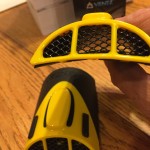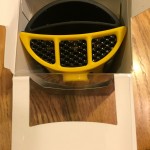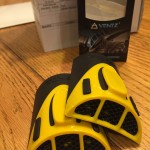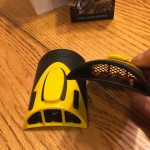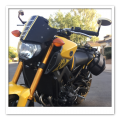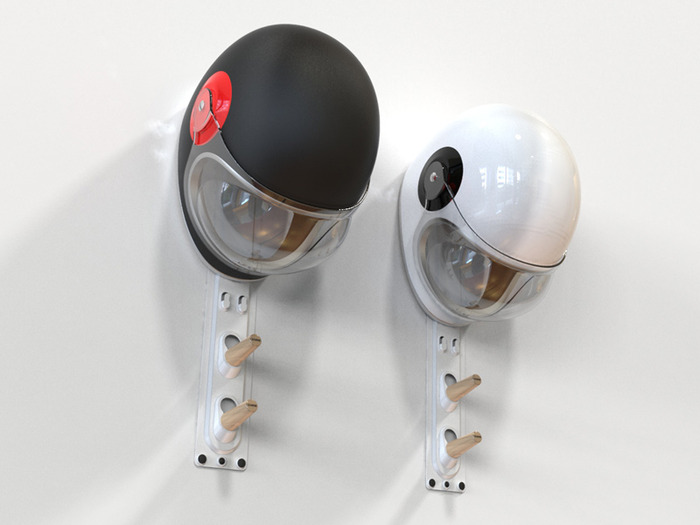For motorcyclists—especially all the gear all the time (AGATT) motorcyclists, the Arizona summer heat is a daunting nemesis. During June, July and August riders often experience late afternoon temperatures above 100 degrees Fahrenheit and in late July and August it’s not uncommon for temperatures to reach between 110 and 120 degrees. Any opportunity to minimize that heat’s effect is well received. Motorcycle Melee had an opportunity to test a product to see how well it cooled against those 100+ degrees days.
The folks at Ventz have
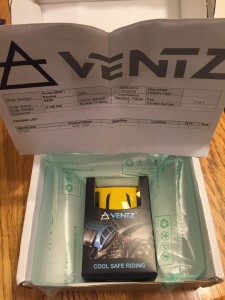
created a clip-to-your-jacket-sleeve air vent system that promises to funnel bug-free air up your sleeves, over your arms and up to your shoulders offering a refreshing flow of cool air. (https://www.ventz-range.com/).
This product is presented in a professional package and its construction is solid — a simple plastic clip holds the Ventz’ hard plastic, screened ventilation port securely to your sleeve while the soft rubber vent shaft remains comfortable against your wrist. They’re easy to put on and stay relatively out of your way while riding.
We tested the Ventz system over the course of a week in early morning and late afternoon conditions on two separate motorcycles with mesh motorcycle jackets. I tested on my 2015 Yamaha FZ-09 while my other tester did his test on a 2006 Kawasaki ZX6R. The Yamaha offers an upright seating position while the ZX6R is a sport bike seating position. My jacket has tight mesh while the ZX6R’s tester’s jacket has a coarser, open mesh pattern.
Let’s start with my testing. I commute 100 miles each day and start my day at 4:30 am. At that time, during testing, the temperature was about 85 degrees with low humidity (around 20-30%). I attached the Ventz systems in the usual position on my sleeves. While riding in the morning with both hands on the handlebars, I noticed a relatively low amount of air flow up my sleeves at 45 MPH. When on the highway at speeds between 75 and 80 MPH I noticed just slightly more air flow. While there was air flow, it made it only to my forearms. I can attribute this to two things. First, the hand position on the stock FZ-09 handlebars puts the lower arm nearly parallel to the ground with my knuckles just slightly above the back of my hands. I think that the hand position – particularly my knuckles – were responsible for blocking a good bit of air into the Ventz system. I tried a couple of different hand positions – raising my elbows about 3 inches and also holding my left hand down near my thigh so my forearm was about at a 45-degree angle to the ground. These positions enhanced the air flow because the air was hitting the back of my hand and being forced through the Ventz system. This did create slightly stronger air flow; unfortunately it wasn’t strong enough to provide any additional air flow past my forearm. This I attribute to the second condition – the sleeves in my mesh jacket have very little room around my arm. This tight fight seemed to inhibit the air flow past the forearm.

While riding in the 100-110 afternoon temps I experienced similar air flow, but the real challenge is that air flowing at 110 degrees is just hot air and offers no relief. I did find one particular situation where I enjoyed a slight respite from that searing heat. When I would stop at red lights, of course I would sweat profusely. When I would accelerate away – after about a minute stewing in that heat – the air flow across the sweaty arms actually created a cooling effect that lasted about 30-45 seconds, but after that the sweltering heat quickly evaporated the sweat – until the next red light. I even tried attaching the Ventz to the bottom of my sleeves to try and get extra air flow, but that didn’t seem to increase the air flow and it was too uncomfortable to do consistently.
My other tester’s jacket has mesh that already offers good air flow. I was hoping that being in the sport bike riding position the air would impact the backs of his hands and force air up his sleeves creating some additional air flow. He indicated that the mesh was too coarse to funnel the air and he got no noticeable additional air flow. He also wears a watch daily and offered that the Ventz system pressed against his watch causing some discomfort.
So we would like to offer this summary regarding the Ventz motorcyclist air conditioning system.
The folks who created this product did a nice job addressing a challenge faced by many riders – managing riding in the heat. The product is well made and arrived in a very professional package – this team doesn’t fool around with the quality of its product. The Ventz is offered in a multitude of colors to easily color-coordinate with your ride and / or your jacket.
The cooling effect of the Ventz fell short of our hopes. I attribute this to the:
- Extreme heat conditions of riding in Arizona
- Type and fit of the mesh jackets on which the Ventz were tested—the snug fitting sleeves prevented flow past the forearm and the coarse mesh allowed air to escape before it flowed up the arm.
- Hand/arm position on motorcycles with an upright seating position seem to inhibit the Ventz’ ability to get air flow up past the forearms.
So if you’re riding in Arizona-like sweltering heat, you may want to try other cooling techniques like soaking a long-sleeve t-shirt in water before riding and letting the heat evaporate the water – heck doing this with the Ventz may provide an evaporative cooling effect – as long as your ride is less than 10 minutes.
If you’re riding in other parts of the world that don’t have 100+ degree temps, it’d be worth the roughly 20 bucks (USD) for you to get a set of these and do your own testing.











